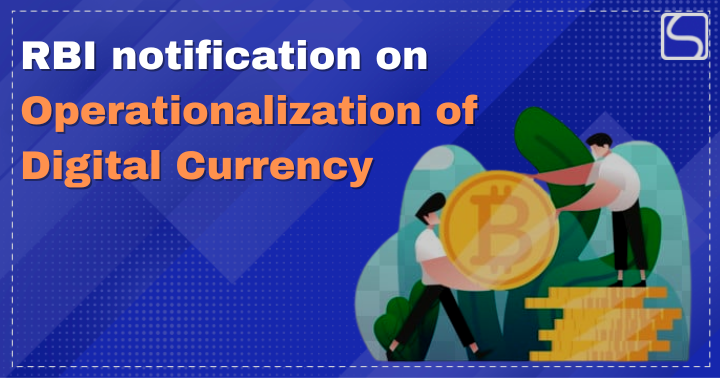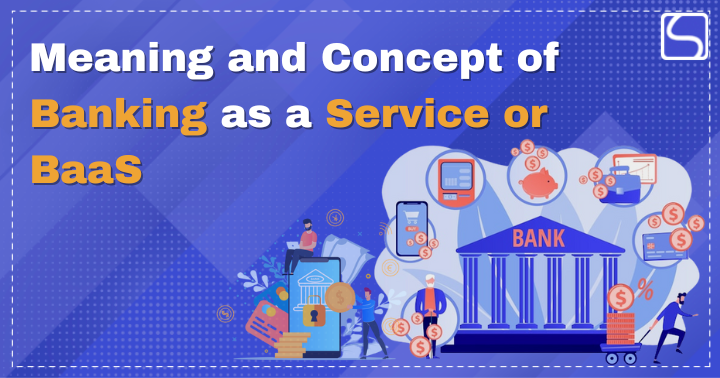RBI Notification on Operationalization of Digital Currency

Snehita Shukla | Updated: Nov 11, 2022 | Category: Digital Banking
One of the main functions of the Reserve Bank of India is the management of currency in India. It also operates in India’s production, designing and overall management of money. The RBI issued a notification on 7th October 2022, announcing the pilot launch of digital currency in Digital rupees (e₹) for some exceptional cases. The Operationalization of the Digital Currency- (e₹-W) Wholesale Pilot will start on 1st November 2022. The first Pilot in Digital Rupee – Retail segment (e₹-R) is also expected to be launched soon.
Table of Contents
Overview of Central Bank Digital Currency (CBDC)
The Central Bank Digital Currency, or CBDC, is a digital form of currency notes issued by a central bank. The objectives for giving CBCDs might differ for each country according to their requirements. The Operationalization of digital currency will be an extra option to the current money system. It is substantially similar to banknotes but in a digital form, which makes it comparatively easier, faster and cheaper. Digital currency also has other transactional benefits than other forms of digital money.
Two basic approaches govern the Reserve Bank’s policy towards the Operationalization of digital currency-
- Creating a digital currency Rupee which is as close as possible to a paper currency
- Managing the process of introducing the digital Rupee in a seamless manner
The Operationalization of the Central Bank Digital Currency focuses on critical points such as technology and design choices, digital currency uses, issue mechanisms, etc. It also examines the implications of the Operationalization of digital currency on the banking system, financial and monetary policies and privacy issues analysis.
RBI Regulation on Digital Currency
The RBI, or Reserve Bank of India[1], released a notification on 7th October 2022, announcing that RBI would be starting the pilot launches of the digital currency in Digital rupees (e₹) for some exceptional cases.
According to RBI, the Operationalization of Digital Currency- (e₹-W), Wholesale Pilot shall start on 1st November 2022.The first Pilot in the Digital currency of Rupee – (e₹-R) Retail segment is to be launched in select locations in closed user groups of customers and merchants.
Using Digital Currency is expected to make the inter-bank market much more efficient. Settlement in central bank money will reduce the transaction costs by pre-empting the need for settlement guarantee infrastructure or collateral to mitigate settlement risk.
The following Banks have been identified for participating in the Pilot namely:-
- State Bank of India
- Bank of Baroda
- Union Bank of India
- HDFC Bank
- ICICI Bank
- Kotak Mahindra Bank
- Yes Bank
- IDFC First Bank
- HSBC Bank
Issue of Concept Note on Digital Currency
The Reserve Bank of India issued a concept note for Central Bank Digital Currency (CBDC) for India on 7th October 2022. The main objective behind the concept note is to create awareness about CBCDs and the Operationalization of digital currency in Digital rupees (e₹) in specific. It also discusses the choices, objectives, risks and benefits of issuing a digital currency in India. The concept note mentions the critical considerations for the digital currency, such as design choices, technology, uses and its implications on the entire banking system, finances, policies, privacy system, etc.
Importance of Central Bank Digital Currency (CBDC)
The importance of CBDC includes:
- Central Banks issue CBCD as a sovereign currency in alignment with their financial policies
- It acts as a liability on the Balance sheet of the Central Bank
- It is accepted as a safe store of value, legal tender and medium of payment by all government agencies, citizens and enterprises.
- It can be freely converted against cash and commercial bank money
- It can be a fungible legal tender, and holders are not mandated to have a bank account
- It provides funds and transactions at a lower cost of issuance
RBI’s approach to Central Bank Digital Currency (CBDC)
RBI has been working on the analysis of the pros and cons of introducing CBDCs for some time. RBI is currently working in favour of a phased implementation strategy and is planning for step-wise systems through different stages of pilots, which the final Operationalization of digital currency would follow. RBI is also checking the use cases that could be implemented with less or zero disruption. Depending on the different use cases, various technological options will be tested based on the outcomes; the final architecture will be decided. RBI is exploring the possibility of implementing account-based CBDC in the Wholesale segment & token-based CBDC in the Retail segment vide a graded approach.
This phase involves the following steps:
- Building a prototype according to the recommendations of the WG.
- Specifying the technical requirements to technology partners.
- Testing the idea in a suitable environment to examine its functions, designs, deployment plan and success criteria.
- Performing test cases with both positive and negative aspects to analyse its durability and document the results.
- Evaluate Test Results and finalize the design of the prototype
- Pilot: Conducting large-scale pilots with a diverse and more extensive user base. People participating in pilots must include users from different literacy levels, income levels, regions, genders and age groups. This will help RBI understand the future use of the CBDC in India. The test results of the Pilot must be carefully evaluated and incorporated into the final design of the CBDC.
Conclusion
CBDC, or central bank digital currency, holds many promises by assuring transparency & low operation costs, along with other benefits and the strength to expand the existing payment systems to meet the needs of a broader category of users.CBDC, across the world, is either in the conceptual, development, or pilot stages. Therefore, in the absence of precedence, an extensive stakeholder consultation and an iterative technology design must be incorporated to develop a solution that meets the requirements. Concept Note on the Operationalization of digital currency provides a high-level view of motivations for introducing CBDC in India, its potential design features, implications on various policy issues, and the possible requirements of a technology platform. Inferences drawn here are exploratory though they appear to be most suitable at this juncture.












